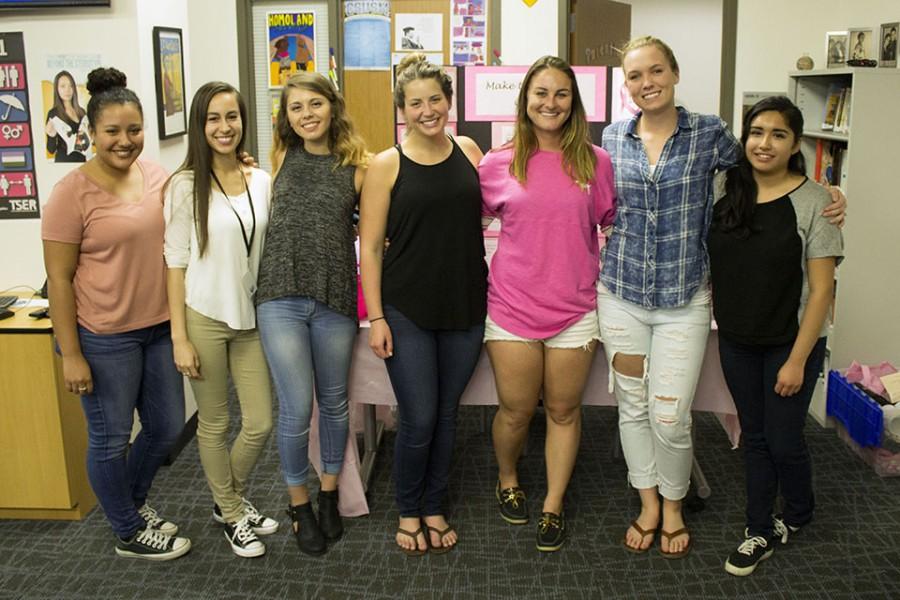Students spread breast cancer awareness through skill-based presentation
March 30, 2016
Students gave a presentation called “Make the Breast Choice” on March 16 in the Gender Equity Center to explain the importance of early detection and self-exams as means to prevent breast cancer.
The event, co-sponsored by the Gender Equity Center and CHABBS, is among the many events happening during Women’s Herstory Month.
Nine students from Dr. Eliza Bigham’s Applied Research in Human Development class hosted the presentation. Each student chose to present on the topic due to personal experience and/or unfamiliarity with breast cancer and the practice of self-diagnosis.
Presenters introduced audience members to the topic through a series of questions meant to gauge their level of awareness. Questions focused on whether audience members knew the importance of early diagnosis, whether they have ever felt a male/female/abnormal breast or if they knew about the resources available in campus. These questions structured the remaining time of the presentation.
Before the presenters delved into the informational session, they asked audience members to participate in a game. Four participants would compete in teams of two. One person on the team would put on a loose white shirt and place two large balloons, representing breasts, underneath. The other team member would then toss ping-pong balls and their partner would try to catch them. The winning team received black bracelets with the words “SAVE 2nd BASE” running across them.
Following the game, the students presented a series of facts and statistics.
They began by discussing the widespread effect of breast cancer. Presenters asked the audience to number themselves one to eight. Then those who were numbered one stood up representing the one in eight women affected by breast cancer.
Along with illustrating the amount of people who are affected, the students also dispelled some misconceptions about the disease. They emphasized that men are also affected by the disease and that even young people are at risk.
Images of a man and woman who each went through a mastectomy, a surgical removal of their breast, were put on display.
Lastly, presenters asked the audience members to give themselves a breast exam. Each person stood up and lifted one of their arms over their head. Next, they used two to three of their fingers and pushed down in a circular motion from their underarm straight down to their rib cage. By repeating this motion and moving inwards towards their chest, audience members were encouraged to get to know their personal bodies, because they are different from everybody else.
When asked to comment on the importance of the presentation and Women’s Herstory Month, ASI Executive Vice President Bianca Garcia said, “There is a stigma around touching breasts and people are afraid to ask questions.”
Kelly Imgrund said, “There are a lot of [issues] not brought to the light.”
The next Make the Breast Choice presentation will take place April 6 in The Quad classroom.







